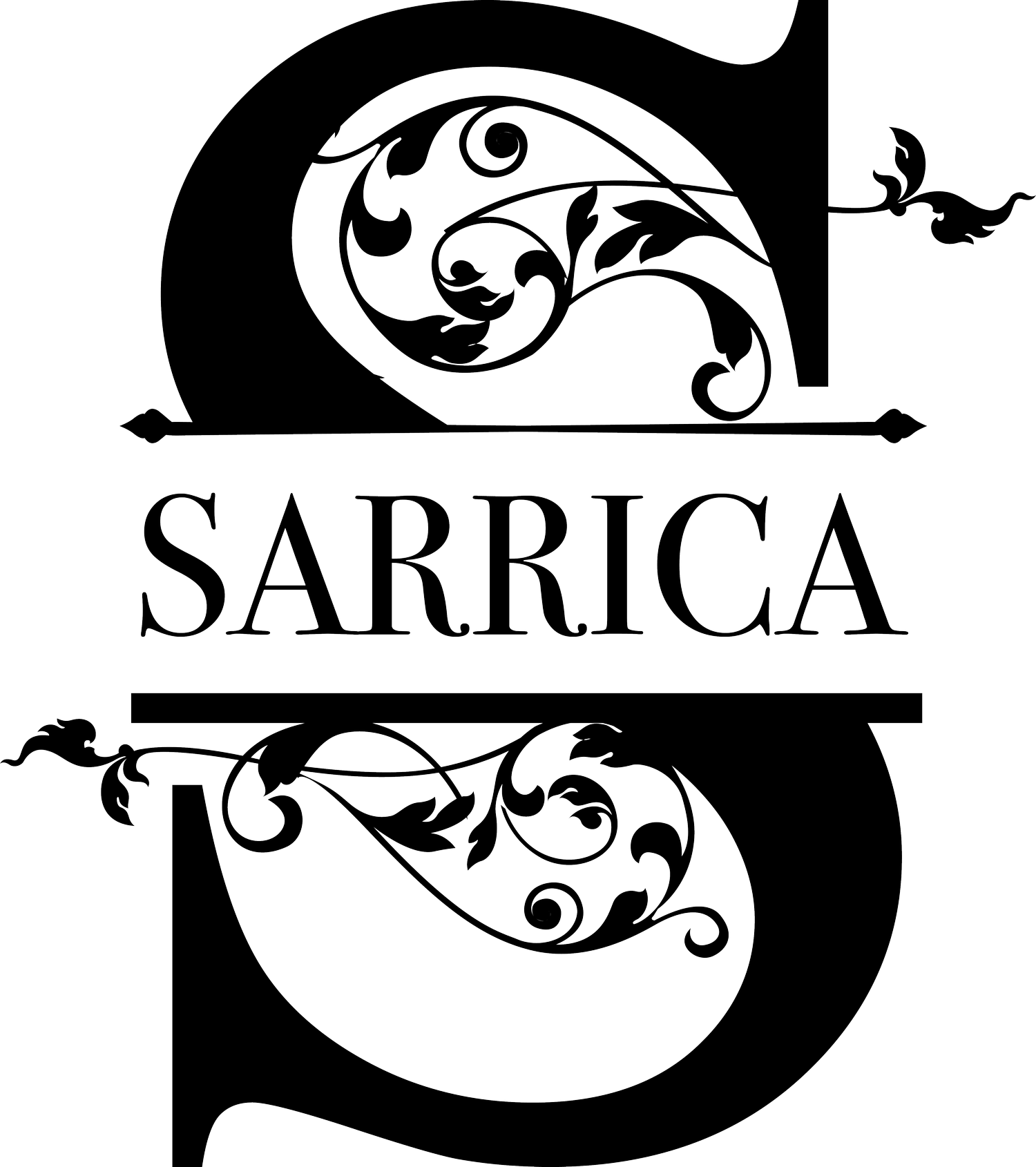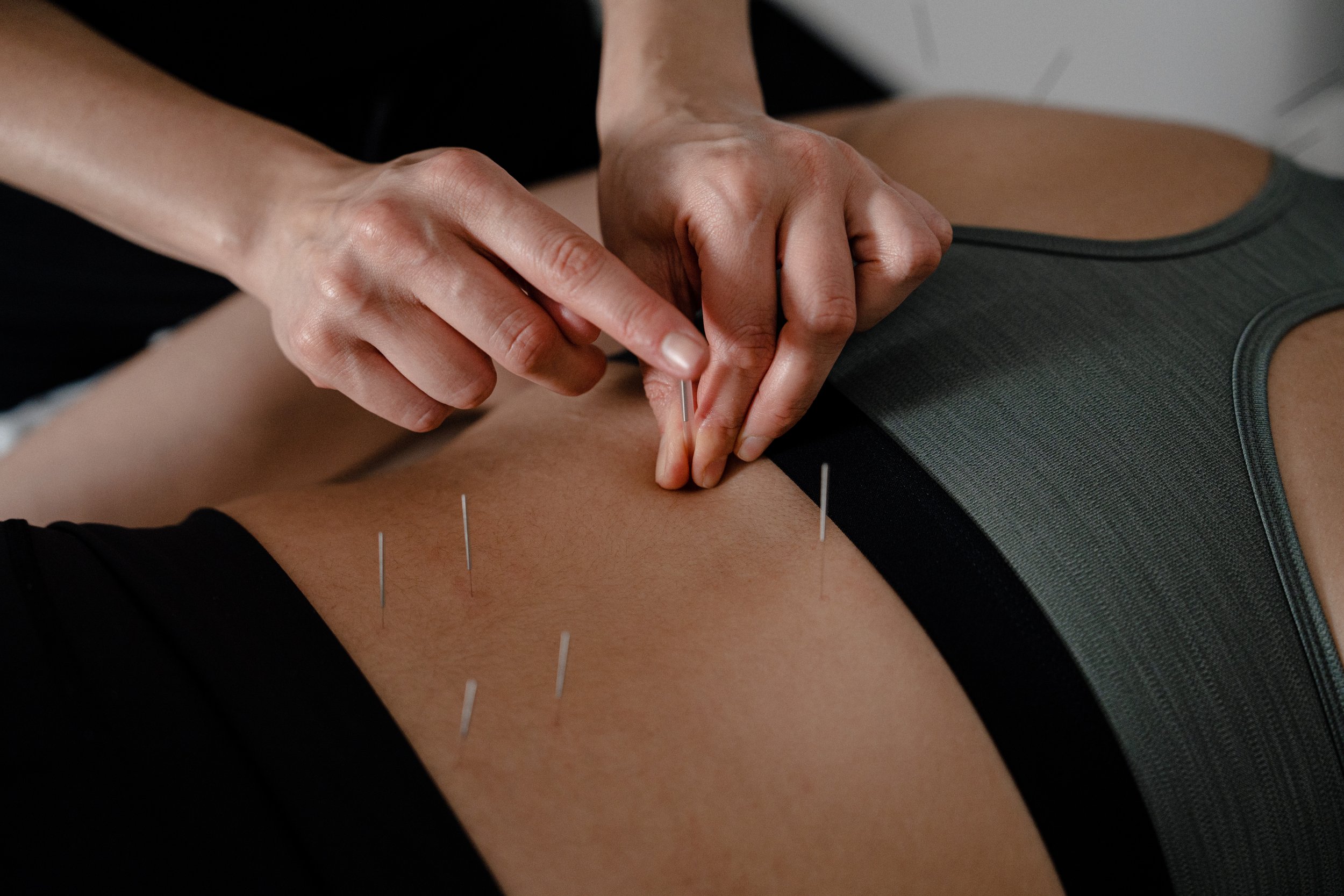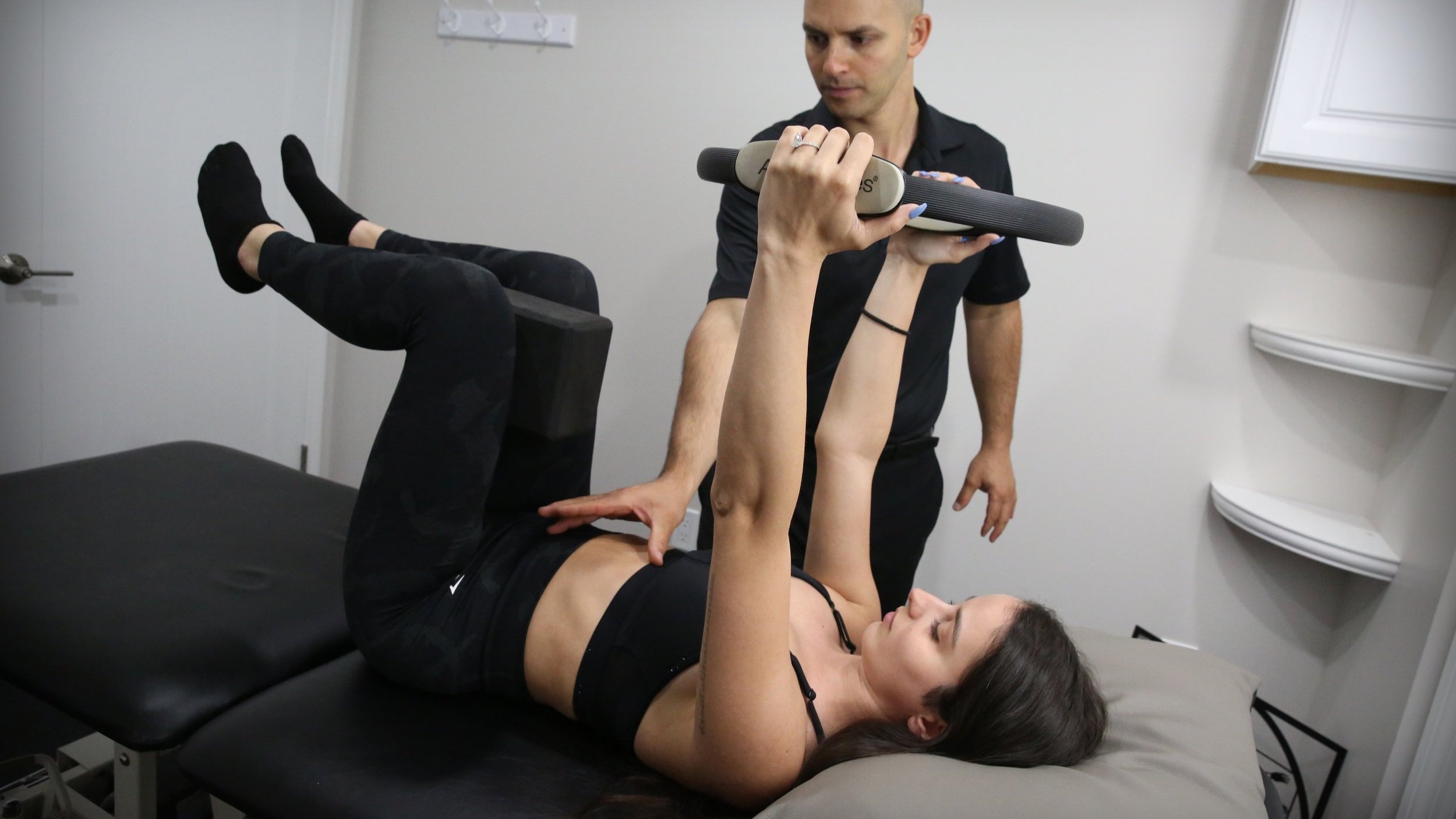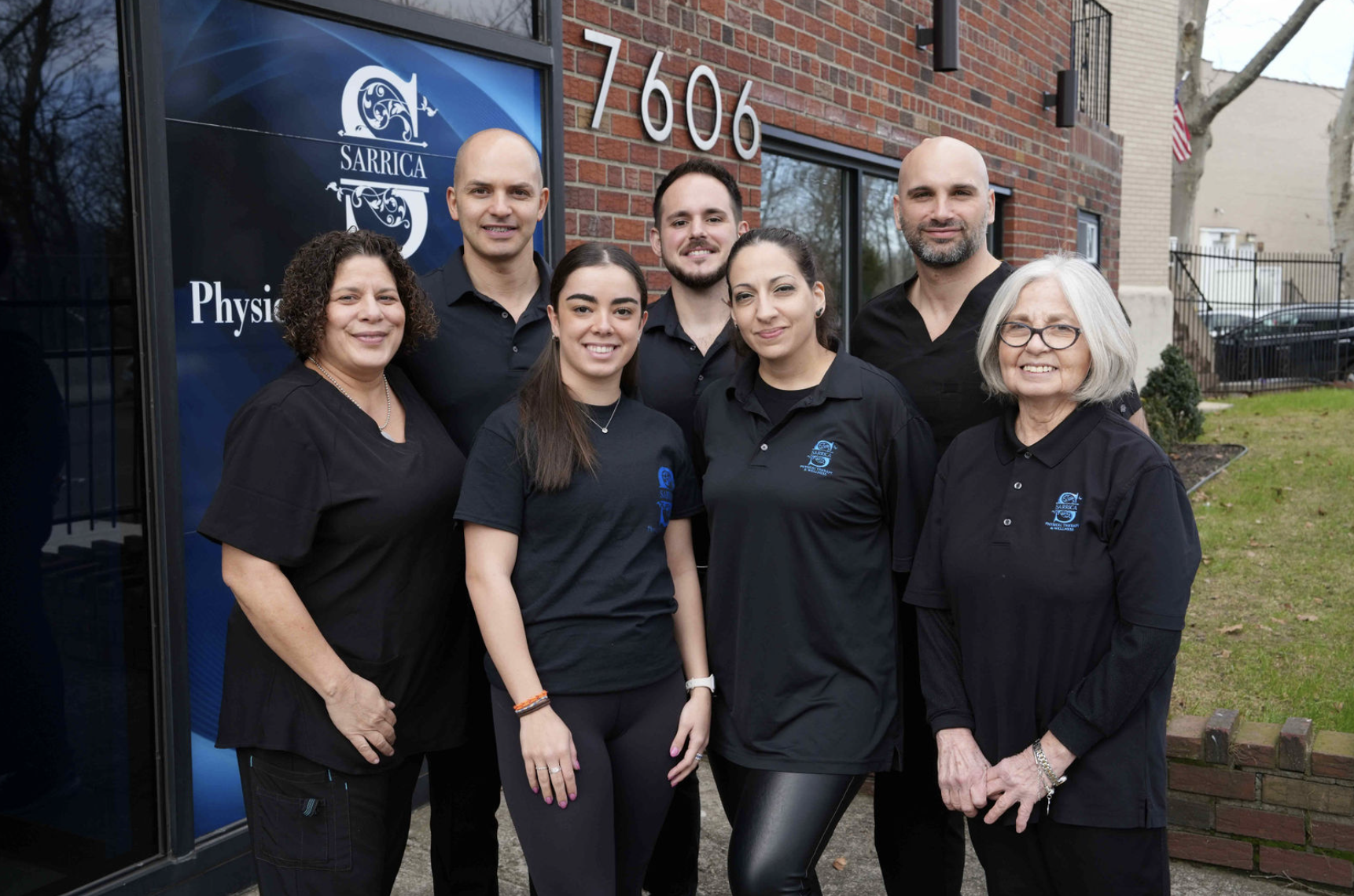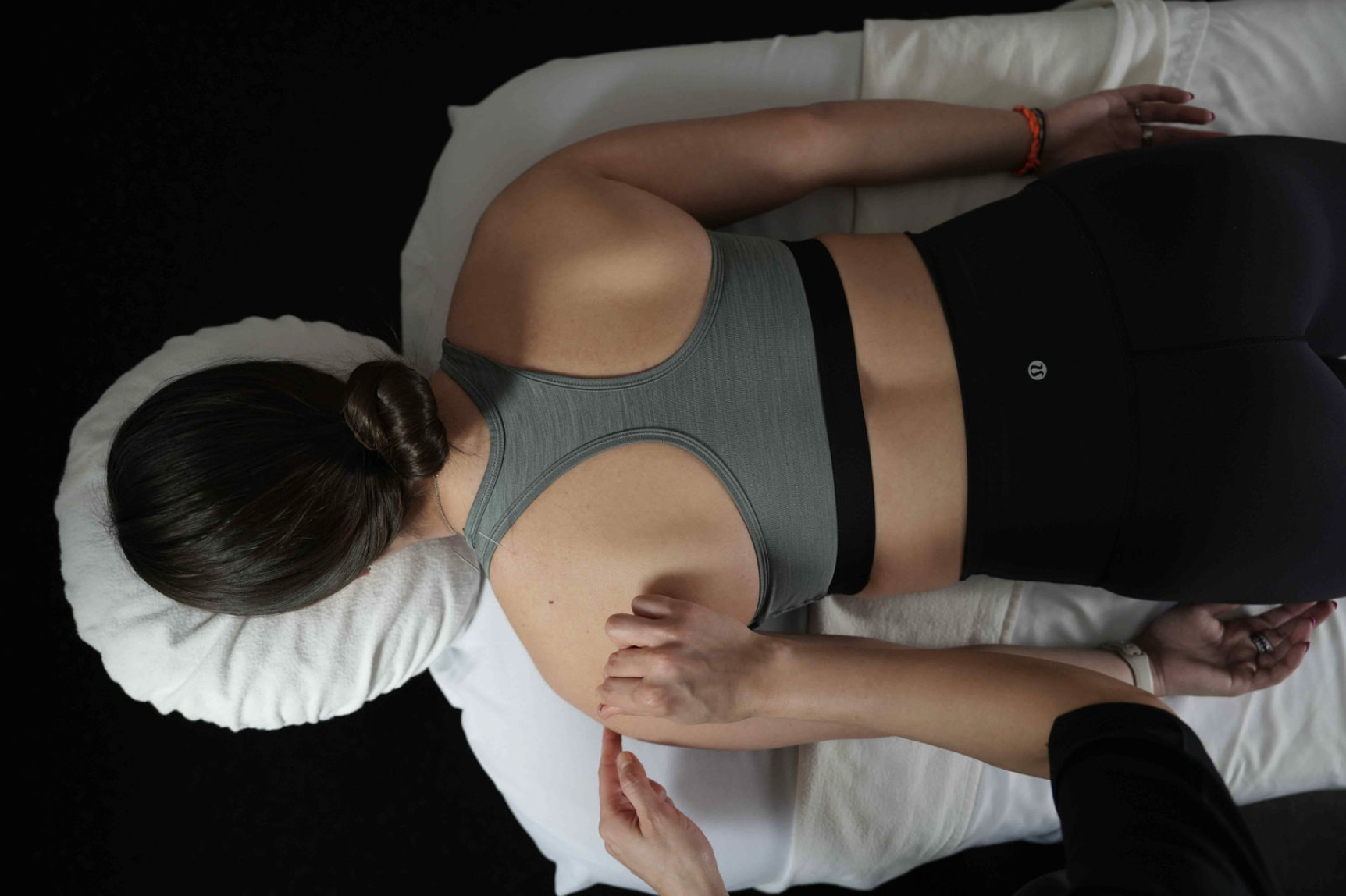Current Concepts in the Treatment of Iliotibial Band (ITB) Syndrome
What is the Iliotibial Band?
The iliotibial band is a thick band of connective tissue that runs down the outside of the thigh. This band of tissue is connected to a muscle at the hip called the tensor fasciae latae (TFL).
How and why does this area become compromised?
IT band syndrome occurs when there is an overutilization of the TFL and an underutilization of the gluteal muscles. The TFL and the glutes both help to move the hip away from the body, but the TFL internally rotates the hip while the glutes externally rotate the hip. When the TFL takes over, it can result in overstressing of the ITB. This causes a sharp pain on the outside part of the knee. When athletes don’t have good motor control of their glutes, we tend to see a hip drop, excessive femoral internal rotation, and knee valgus (as can be seen below). Patients most commonly feel this pain when running, jumping, and negotiating steps.
ITB syndrome is very common in runners and other athletes because they tend to over utilize their quads and underutilize their gluteal muscles (a concept referred to as being “quad dominant”). The quads connect to the iliotibial band (specifically the vastus lateralis, as can be seen below). When the quads are overutilized, it can lead to excess tension on the ITB and manifest as ITB syndrome. We commonly will see these runners perform a “cross over” when running. Their affected side tends to cross midline consistently, as can be seen below.
What can we do?
Have no fear, Sarrica PT & Wellness is here! The good news is that ITB syndrome is very treatable, and we see patients with this injury all the time. We focus on the following most often with lots of success:
Stretching and foam rolling to the TFL
Foam rolling to the vastus lateralis
Strengthening/endurance and neuromuscular retraining of the gluteals
Single limb stability training
Running mechanics retraining (emphasis on avoiding excessive cross over and hip drop)
Manual therapy techniques (active release of ITB/TFL)
If you suspect that you or somebody that you know may have iliotibial band syndrome, please do not hesitate to contact us at 347-560-6920. We would be happy to assist you in your recovery! We will make sure to treat the root cause of this to ensure that it does not become a lingering issue for you!
Dr. Paul Nasri, PT, DPT
Doctor of Physical Therapy
Sarrica Physical Therapy & Wellness
Staff Physical Therapist
